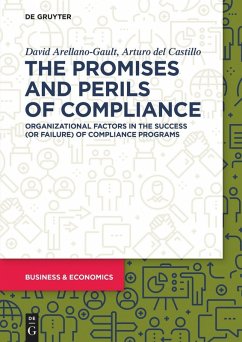Based on empirical experience and illustrative cases, The Promises and Perils of Compliance seeks to discuss compliance not as just another management tool, but rather as a collection of rules, norms and controls embedded into an organization's culture and environment that must be understood when designing a compliance program. The authors propose that organizations must be transparent at all stages of the design and implementation of the compliance program and be prepared to interpret, adapt, change, and redefine the program in action. It is also important for organizations to set a realistic agenda for the program so that gains can be seen and celebrated by all stakeholders.
This book offers a pathway to understanding the organizational dynamics any compliance effort needs to consider. It will benefit business students as well as managers, compliance officers, and CEOs and executives at every level.
Dieser Download kann aus rechtlichen Gründen nur mit Rechnungsadresse in A, B, BG, CY, CZ, D, DK, EW, E, FIN, F, GR, HR, H, IRL, I, LT, L, LR, M, NL, PL, P, R, S, SLO, SK ausgeliefert werden.
"A realistic and integrative book that moves the study of compliance beyond the legal and rule-bound approach that has thwarted advances in the field, one of the fastest growing and inclusive professional sectors in the world. Once a country or sector receives a list of the rules, how does a compliance professional get employees to accountably follow them? Arellano-Gault and del Castillo have clearly responded to that question with essential knowledge and understanding of ethics, influence and negotiation, power, and organizational behavior. This is the one book that has it all and we need it." --Carole L. Jurkiewicz, University of Colorado, Colorado Springs, School of Public Affairs









